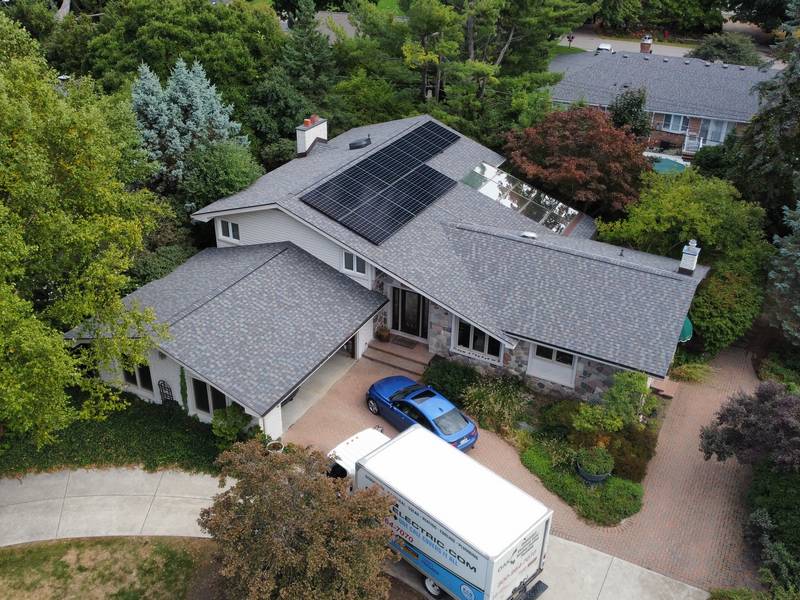While some homeowners have roofs perfect for solar arrays, others might find ground-mounted systems are a better fit. So, how do you know which option is right for you?
During our in-person site visits, we evaluate your roof and property to pinpoint the best location for your solar system. Here’s a quick guide to help you understand what makes a good candidate for each option and some crucial considerations for both.
Criteria for a Roof-Mounted System

To have an efficient roof-mounted solar array, your roof needs to meet specific criteria regarding orientation, material, solar access, and condition.
Orientation: Panels facing true south capture approximately 20% more energy due to the sun’s daily trajectory. While south-facing panels get the best sunlight, panels facing other directions can still generate substantial energy.
Material: Ideal roofing materials for solar arrays include standing seam, asphalt shingle, and corrugated metal. Standing seam roofs are particularly advantageous because they allow for panel installation without roof penetration.
Solar Access: Direct sunlight is crucial for energy production. If your roof is shaded by trees or other obstructions, the array’s efficiency will decrease. Sometimes, tree removal can improve solar access.
Condition: For shingle or asphalt roofs older than 15 years, replacement is recommended before installing a roof-mounted system. Older roofs of these materials may not be suitable for solar panel installation.
Criteria for a Ground-Mounted System
Ground-mounted arrays require a lot of space, underground trenching, and unobstructed solar access.
Space: For a ground mount, you need least 350 square feet of available surface area. They must also comply with municipal regulations regarding distance from property boundaries and power lines.
Underground Trenching: Connecting a ground-mounted array to your home’s electrical meter requires underground trenching to lay wires. Our installation team will handle excavation, wiring, and covering the trench before installation.
Solar Access: Like roof mounts, ground-mounted systems need direct sunlight. Ensure the designated area is large enough and free from sunlight-blocking objects.
Ground Mount vs. Roof Mount
While both options are effective ways to power your home, they differ in various ways like cost, permitting, production capabilities, and accessibility.
Cost: Ground mounts are generally more expensive than roof mounts due to the additional structures needed for support. Roof mounts utilize the existing roof, reducing costs.
Permits: Each municipality has its own permitting requirements for solar, which can differ for ground and roof mounts. For example, some areas prohibit ground mounts visible from the street. Local regulations may significantly influence your choice of system.
Production Capabilities: Ground mounts can potentially produce more energy than roof mounts because they can offer space for more panels. A well-positioned roof system can still be more productive than a ground mount depending on the solar access.
Accessibility: Maintenance is easier with ground mounts since clearing snow or debris since they are closer to the ground. If you have a roof array, we suggest hiring a professional team to help clean it when needed.
Key Takeaways
Choosing the right solar solution can be complex, but you don’t have to navigate this decision alone. Our team is here to provide expert guidance and ensure you receive a system tailored to your unique needs.
